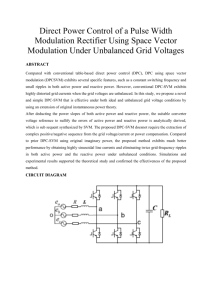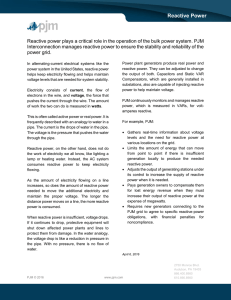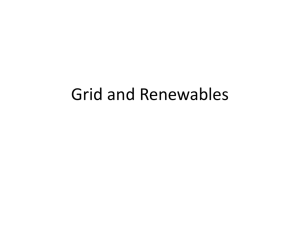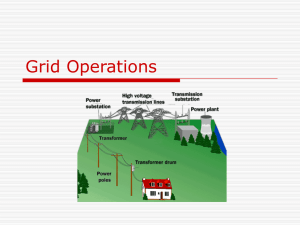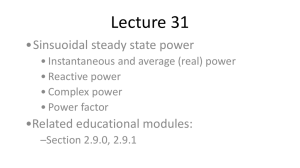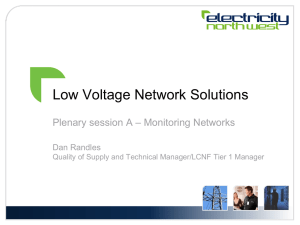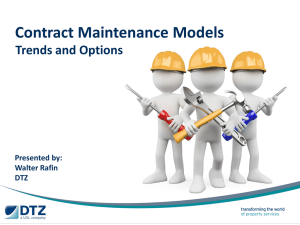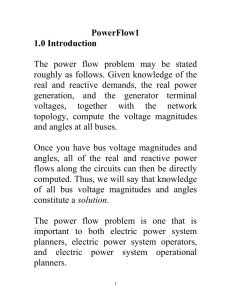Issue 3 (Modeling Data)
advertisement
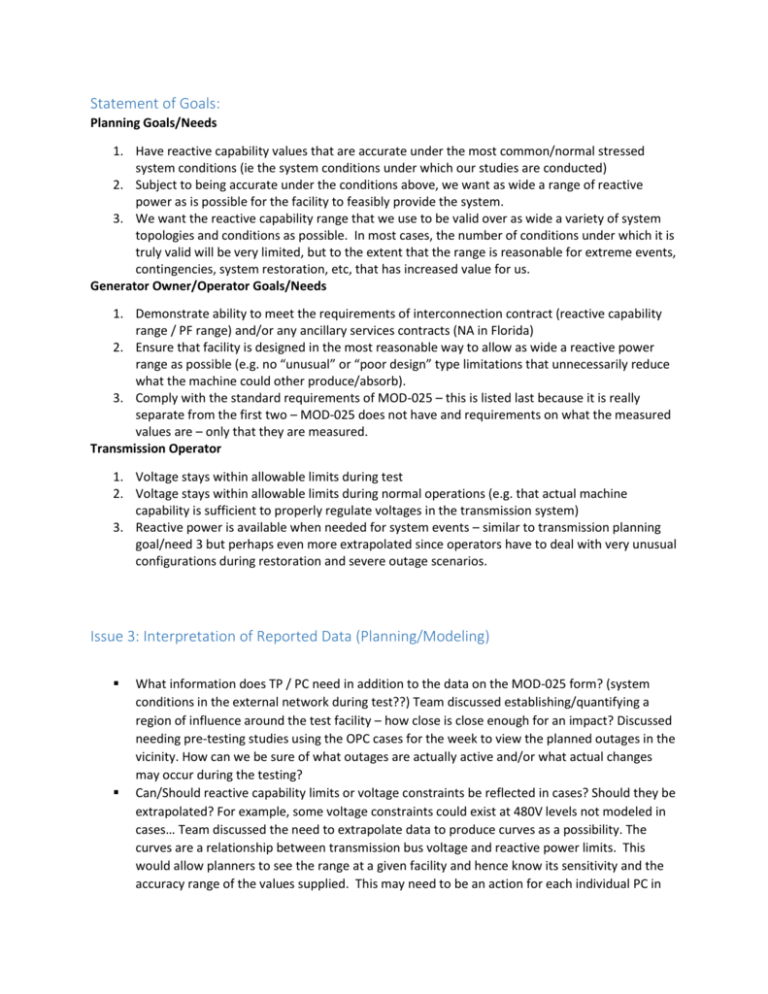
Statement of Goals: Planning Goals/Needs 1. Have reactive capability values that are accurate under the most common/normal stressed system conditions (ie the system conditions under which our studies are conducted) 2. Subject to being accurate under the conditions above, we want as wide a range of reactive power as is possible for the facility to feasibly provide the system. 3. We want the reactive capability range that we use to be valid over as wide a variety of system topologies and conditions as possible. In most cases, the number of conditions under which it is truly valid will be very limited, but to the extent that the range is reasonable for extreme events, contingencies, system restoration, etc, that has increased value for us. Generator Owner/Operator Goals/Needs 1. Demonstrate ability to meet the requirements of interconnection contract (reactive capability range / PF range) and/or any ancillary services contracts (NA in Florida) 2. Ensure that facility is designed in the most reasonable way to allow as wide a reactive power range as possible (e.g. no “unusual” or “poor design” type limitations that unnecessarily reduce what the machine could other produce/absorb). 3. Comply with the standard requirements of MOD-025 – this is listed last because it is really separate from the first two – MOD-025 does not have and requirements on what the measured values are – only that they are measured. Transmission Operator 1. Voltage stays within allowable limits during test 2. Voltage stays within allowable limits during normal operations (e.g. that actual machine capability is sufficient to properly regulate voltages in the transmission system) 3. Reactive power is available when needed for system events – similar to transmission planning goal/need 3 but perhaps even more extrapolated since operators have to deal with very unusual configurations during restoration and severe outage scenarios. Issue 3: Interpretation of Reported Data (Planning/Modeling) What information does TP / PC need in addition to the data on the MOD-025 form? (system conditions in the external network during test??) Team discussed establishing/quantifying a region of influence around the test facility – how close is close enough for an impact? Discussed needing pre-testing studies using the OPC cases for the week to view the planned outages in the vicinity. How can we be sure of what outages are actually active and/or what actual changes may occur during the testing? Can/Should reactive capability limits or voltage constraints be reflected in cases? Should they be extrapolated? For example, some voltage constraints could exist at 480V levels not modeled in cases… Team discussed the need to extrapolate data to produce curves as a possibility. The curves are a relationship between transmission bus voltage and reactive power limits. This would allow planners to see the range at a given facility and hence know its sensitivity and the accuracy range of the values supplied. This may need to be an action for each individual PC in FRCC, in addition to providing model information in MOD-026/27. Discussed combining a few aspects of MOD-026/27 into what is developed. Team also discussed expanding the model representation of reactive power capability to a multi-point/curve method – this will continue to be evaluated. Related to scheduling and to interpretation of data – issue of differences in actual bus voltages versus Planning or OPC power flow case bus voltages (proper determination of expected bus voltage impact pre-test, or proper representation of voltage limited plants in planning cases) Team discussed that, related to the pre-event modeling and to placement of data in the planning models, if cases do not have appropriate bus voltages, such accuracy will be lost – that is, if bus voltages in cases are significantly different from those in the actual system, the verified reactive output will not match the models. One easy test is to confirm if the reactive output can be matched in the model, or if it is significantly different from the test values. Will need to focus on this issue as a region. Team discussed comparing model reactive power range to historical operating data as a check – should fall within the D-curve but outside of the normal output levels seen during plant operation. Also an individual PC item. Team discussed what to do when machine real power output is significantly dissimilar to maximum capability in the model – Solution not complete yet – perhaps provide some guidance as to how far off is generally acceptable – let’s discuss. Perhaps plus/minus 5% of what the maximum capability that is taken credit for in the models?

